Construction Environmental

What is green building and why is it important for the construction industry ?
Green building is an approach to design, construction, operation, and maintenance of buildings that aims to minimize environmental impact and resource consumption throughout a building's lifecycle. It focuses on sustainability, energy efficiency, water conservation, materials selection, and indoor environmental quality. The importance of green building in the construction industry stems from environmental concerns, economic benefits, and social responsibility. Green buildings reduce carbon footprint, conserve resources, preserve biodiversity, save energy costs, have higher asset values, and promote healthier living conditions. They also set community standards for sustainable practices and help companies stay ahead of compliance requirements. Green building drives innovation in materials science, design techniques, and construction technology. Overall, green building represents a fundamental shift towards more sustainable and responsible practices within the construction industry.

How often should safety inspections be conducted on a construction site ?
Safety inspections are crucial for construction sites to prevent accidents and ensure worker well-being. The frequency of these inspections depends on the project's size, complexity, type of work, and local regulations. This guide provides a detailed overview of how often safety inspections should be conducted: 1. Daily Inspections: Include visual checks, tools and equipment, and personal protective equipment (PPE). 2. Weekly Inspections: Cover structural integrity, electrical systems, and fire safety. 3. Monthly Inspections: Assess environmental hazards, emergency response plans, and site cleanliness. 4. Quarterly Inspections: Conduct comprehensive site assessments, review training updates, and ensure regulatory compliance. Unannounced spot checks should also be performed throughout the project to maintain safety awareness among workers. Safety should always be a top priority on any construction site, and regular inspections are essential for achieving this goal.

How do weather conditions affect building safety during construction ?
The text discusses the impact of various weather conditions on building safety during construction. It highlights the risks associated with extreme heat, cold weather, rain and water, strong winds, snow and ice, and lightning and thunderstorms. The conclusion emphasizes the importance of monitoring weather forecasts and adjusting working procedures to ensure worker safety.
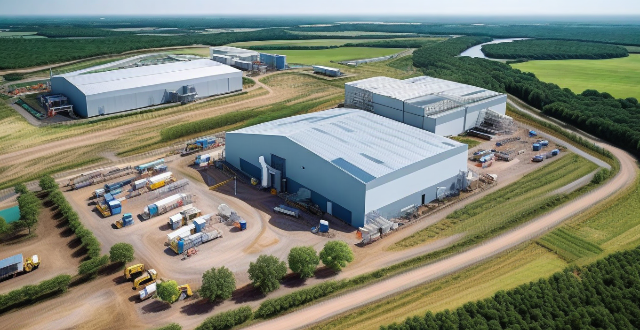
How do building energy efficiency standards affect the construction industry ?
Building energy efficiency standards have a significant impact on the construction industry by affecting cost implications, design philosophy, regulatory compliance, and market trends. These standards require higher initial costs due to advanced technologies and materials but offer long-term benefits like reduced energy consumption and maintenance costs. They also shift the focus of design towards energy performance and sustainability, leading to integrated design processes and innovative solutions. Compliance with these standards is crucial to avoid penalties and legal issues, while certifications like LEED or WELL can provide a competitive advantage. Finally, building energy efficiency standards influence market trends by driving demand for sustainable construction methods and educating clients about their benefits.
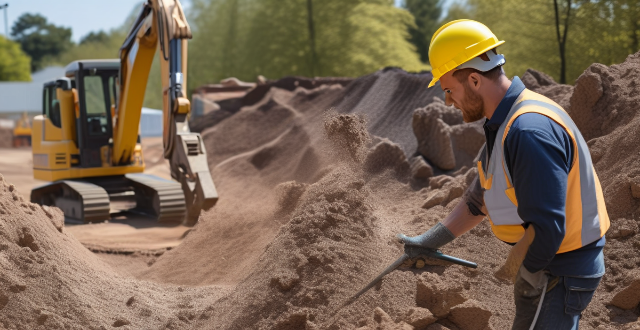
What is the role of personal protective equipment (PPE) in ensuring construction site safety ?
The article discusses the crucial role of Personal Protective Equipment (PPE) in ensuring safety on construction sites. It emphasizes the importance of PPE in protecting workers from physical, chemical, biological, and environmental hazards. The article also highlights the legal implications of not using PPE, as well as its potential to enhance worker productivity. Furthermore, it outlines various types of PPE used on construction sites, such as head protection, eye and face protection, hearing protection, hand protection, foot protection, respiratory protection, and fall protection. The article also provides best practices for using PPE effectively, including proper fit and comfort, maintenance and replacement, training and awareness, and storage and accessibility. Finally, the article concludes that PPE is an essential component of any construction project's health and safety protocols.
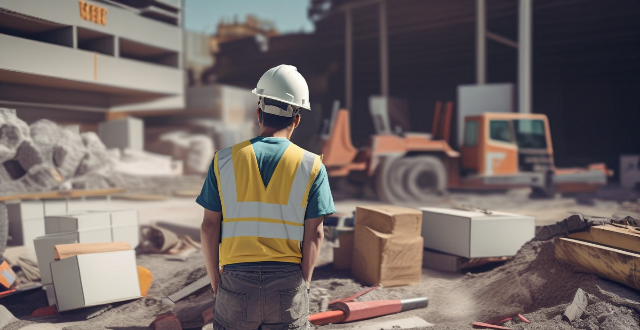
How can we improve safety measures in the construction industry ?
Improving safety measures in the construction industry is crucial for protecting workers and ensuring project completion without delays. A comprehensive approach to enhancing safety includes implementing rigorous training programs, developing comprehensive safety policies, enforcing the use of personal protective equipment (PPE), conducting regular inspections and maintenance, promoting a safety culture, utilizing modern technology, improving housekeeping and orderliness, conducting risk assessments, adopting best practices, and partnering with safety organizations. By prioritizing safety measures, the construction industry can significantly reduce accidents and create a secure environment for all stakeholders involved.

How does poor project management contribute to construction hazards ?
This text discusses the impact of poor project management on construction hazards, including inadequate planning, communication breakdown, ineffective risk management, unrealistic timelines and budgets, and inadequate supervision and training. It emphasizes the importance of effective project management practices for ensuring safety and success in construction projects.
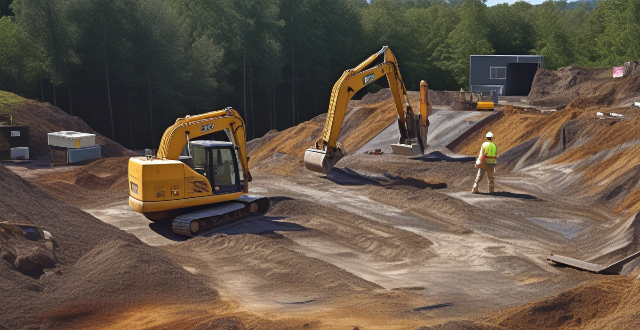
Why is it important to have regular safety training for construction workers ?
Construction sites are dangerous places with numerous potential hazards. Regular safety training for construction workers is essential to mitigate these risks. It enhances awareness of potential hazards, promotes a culture of safety, and ensures compliance with regulations and standards. Ongoing education and training helps workers identify new hazards, develop preventive measures, build a shared responsibility for safety, reinforce safe work habits, meet legal requirements, and maintain insurance coverage. By investing in regular safety training, construction companies can create safer work environments, protect their employees, and avoid costly fines and legal liabilities.
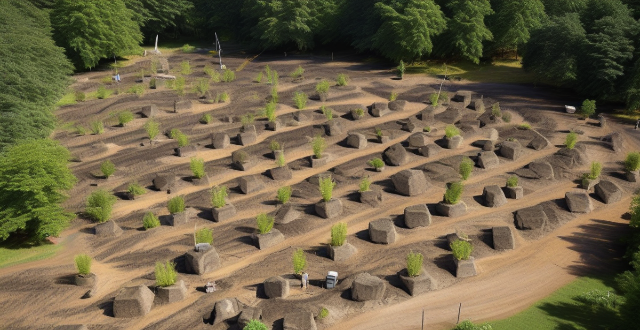
What are the most common causes of construction site accidents ?
Construction sites are dangerous places with various hazards that can lead to accidents and injuries. The most common causes of construction site accidents include falls, being struck by objects, electrical accidents, equipment-related accidents, transportation accidents, fires and explosions, overexertion and repetitive strain injuries, and environmental hazards such as extreme heat or cold, poor lighting, and noise pollution.

How does climate change affect the construction industry ?
Climate change affects the construction industry in various ways, including increased extreme weather events leading to damage and costly repairs, changes in building codes and standards due to new environmental conditions, a focus on energy efficiency and sustainability, potential disruptions to labor availability and supply chains, and increased insurance costs. Builders and developers must adapt by embracing new technologies and practices that promote sustainability and resilience.

What role do schools play in fostering environmental consciousness among students ?
Schools play a pivotal role in nurturing environmental awareness in students by integrating eco-themes into curriculum, organizing extracurricular activities, maintaining green infrastructure, engaging with the community, modeling sustainable behaviors, setting eco-friendly policies, running awareness campaigns, offering service learning opportunities, and implementing assessment and recognition programs. These efforts not only educate students about environmental issues but also empower them to take actionable steps toward preserving the planet.

How can climate and environmental policies be designed to promote sustainable economic growth ?
This text discusses the integration of environmental considerations into economic planning, promoting renewable energy sources, encouraging energy efficiency, supporting green infrastructure, promoting circular economy practices, strengthening environmental regulations, and fostering international cooperation to promote sustainable economic growth.
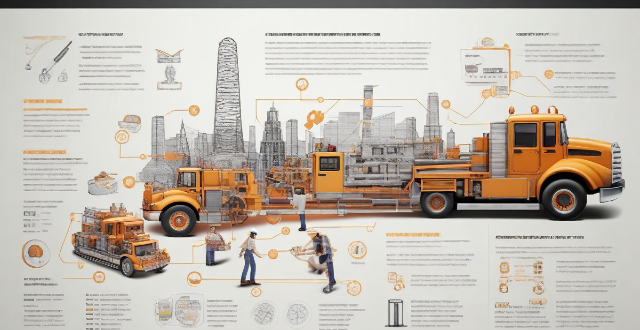
What are the consequences of ignoring safety standards in construction work ?
Ignoring safety standards in construction work can lead to severe consequences, including risk to human life, project delays, financial losses, reputation damage, legal implications, environmental impact, and public safety concerns. Adhering to these standards is crucial for the well-being of all involved parties and the success of the project.

How can technology be utilized to enhance safety protocols in construction projects ?
The text discusses how technology can enhance safety protocols in construction projects. Wearable technology, such as smart helmets and vests, drone technology for aerial surveillance and 3D mapping, Internet of Things (IoT) sensors for environmental and structural health monitoring, Virtual Reality (VR) and Augmented Reality (AR) for safety training and real-time information, and mobile applications for immediate communication and health monitoring are some of the tools and systems that have been developed to reduce risks and ensure the well-being of workers on site. The integration of these technologies is not just about introducing new gadgets, but about creating a culture of proactive risk management.

Can you discuss the environmental impact of various energy storage methods ?
The text discusses the environmental impact of various energy storage methods, including batteries, pumped hydro storage, compressed air energy storage (CAES), and flywheels. It points out that while these methods allow for the efficient use of renewable energy sources and help to balance supply and demand, they also have varying levels of environmental impact. For example, battery production can result in water pollution and deforestation due to raw material extraction, while pumped hydro storage can affect local ecosystems and communities through land use and water usage. CAES may face challenges such as geological requirements and efficiency issues, and flywheels are considered an environmentally friendly option with a low environmental footprint. The text concludes that it is essential to consider both the efficiency and environmental implications of different energy storage solutions to ensure a sustainable future for our planet.

Can you explain the importance of continuous environmental monitoring ?
The article emphasizes the importance of continuous environmental monitoring, which involves regularly collecting data on various environmental factors such as air and water quality, soil conditions, and biodiversity. It helps identify potential issues early on, track long-term changes, support conservation efforts, enhance public awareness, and facilitate research and innovation. The author encourages everyone to stay informed about the state of their local environment and take action to protect it.

How do changing climate patterns influence the choice of construction materials and methods ?
Changing climate patterns significantly impact the construction industry, influencing both the choice of materials and construction methods. Here are some key ways in which these changes affect building practices: 1. Durability and Resilience: Adaptation to extreme weather conditions and longevity in face of climate change are crucial. This means choosing materials that are more resistant to water damage, mold, and fungus, as well as constructing structures that can handle high winds without failure. 2. Energy Efficiency: With global temperatures on the rise, there's an increased focus on energy efficiency in buildings. This involves using better insulating materials to reduce heating and cooling needs, such as advanced forms of insulation and double or triple-pane windows. 3. Sustainability: There's a growing trend toward using sustainable, recycled, or renewable materials in construction. Bamboo, reclaimed wood, and recycled steel are examples of materials that have a lower environmental impact. 4. Water Management: With changing precipitation patterns, including both floods and droughts, architects and builders are incorporating rainwater harvesting systems into their designs to collect and reuse rainwater for non-potable purposes like irrigation and toilet flushing. 5. Local Impact and Adaptation: The availability of certain materials may be affected by climate change, leading to a preference for locally sourced materials that require less transportation and are better adapted to local climate conditions. Designers are considering how buildings can be adapted in the future as climate conditions evolve, including spaces that can be easily converted or added onto.

How can renewable energy policies be designed to maximize social and environmental benefits ?
Renewable energy policies are crucial for transitioning towards a sustainable future. To maximize social and environmental benefits, these policies must be carefully designed, considering various factors such as economic impacts, technological advancements, public acceptance, and environmental sustainability. Here's a detailed guide on how renewable energy policies can be structured to achieve the best outcomes: ## 1\. Setting Clear and Achievable Goals Clear objectives are fundamental for effective policymaking. These goals should be specific, measurable, achievable, relevant, and time-bound. ## 2\. Promoting Technological Innovation and Research Investments in research and development (R&D) are vital for advancing renewable technologies. Incentivize private sector R&D, provide public funding for research, and foster collaboration between academia and industry. ## 3\. Encouraging Public Participation and Awareness Engagement from the public is essential for the successful implementation of renewable energy policies. Educational campaigns, community involvement programs, and feedback mechanisms are key components. ## 4\. Implementing Economic Incentives Make renewable energy options more attractive through financial incentives such as feed-in tariffs, tax credits, and subsidies. ## 5\. Strengthening Legal and Regulatory Frameworks Establish clear regulations that support renewable energy adoption, including net metering laws, renewable portfolio standards, and building codes. ## 6\. Addressing Environmental Concerns Ensure that renewable energy projects minimize environmental impacts through environmental impact assessments, habitat protection measures, and sustainable land use practices. ## 7\. Supporting Infrastructure Development Invest in the necessary infrastructure to facilitate the growth of renewable energy, including transmission networks, storage solutions, and smart grids. ## 8\. Fostering International Cooperation Global collaboration is key to tackling climate change effectively. Facilitate the transfer of renewable energy technologies across borders, collaborate on international research efforts, and participate in treaties aimed at reducing carbon emissions and promoting renewable energy use globally.

Can environmental legislation effectively reduce pollution ?
Environmental legislation has the potential to effectively reduce pollution, but its success depends on various factors such as enforcement and compliance, public awareness and participation, technological innovation, political will, international cooperation, and economic considerations. Strong regulatory bodies, education campaigns, investment in clean technology, government prioritization of environmental protection, global collaboration, and balancing environmental goals with economic development are all crucial for the effectiveness of environmental legislation. Achieving lasting improvements in environmental quality requires ongoing effort from all sectors of society.

What is the role of education in promoting environmental awareness and action ?
Education plays a crucial role in promoting environmental awareness and action by providing knowledge about the environment, developing environmental values, encouraging active engagement, teaching problem-solving skills, and providing opportunities for leadership development.
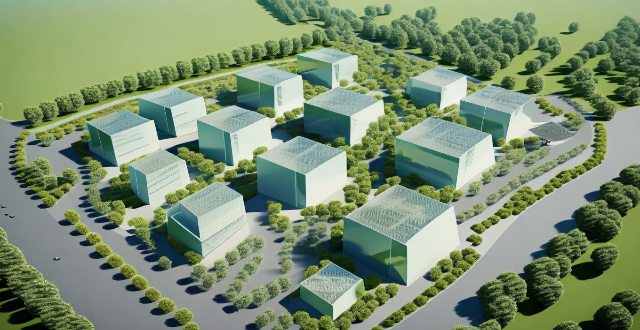
What innovative materials and technologies are being used in modern construction to address climate challenges ?
Innovative materials and technologies in modern construction are being used to address climate challenges. These include green building materials, energy-efficient technologies, water efficiency solutions, and waste management strategies. Recycled materials, eco-friendly insulation, low-emission coatings, solar power systems, smart building management, high-performance glass, rainwater harvesting systems, water-saving fixtures, on-site recycling centers, and waste-to-energy technologies are among the key solutions being adopted. These advancements aim to reduce the environmental impact of buildings, improve energy efficiency, and enhance sustainability.
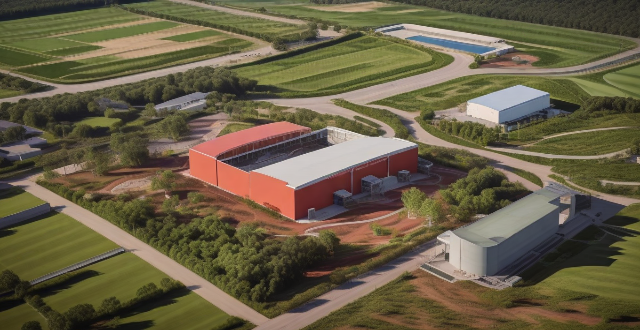
What is the connection between deforestation for stadium construction and increased greenhouse gas emissions ?
Deforestation for stadium construction leads to increased greenhouse gas emissions by reducing carbon sinks, disturbing soil, consuming energy during construction and operation, altering albedo, increasing transportation-related emissions, generating waste, affecting biodiversity, and changing water regulation. Mitigation strategies include sustainable design, using renewable energy, promoting public transportation, carbon offsetting, and effective waste management.

What are the legal requirements for health and safety training on a construction site ?
Legal Requirements for Health and Safety Training on a Construction Site: - Regulatory Bodies: OSHA, EPA, DOL - Types of Training: HAZWOPER, Confined Space Entry, Fall Protection, Electrical Safety, Scaffold Safety - Frequency of Training: Annual refresher courses, on-site training sessions before starting work, regular toolbox talks during work hours - Best Practices: Implementing a safety culture, providing adequate equipment and facilities, conducting regular safety meetings.
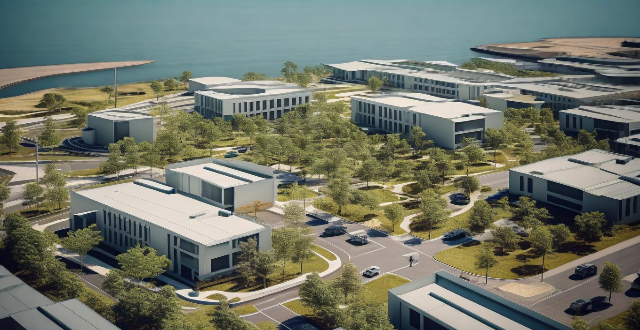
What are the environmental impacts of constructing large sports venues in urban areas ?
Construction of large sports venues in urban areas can lead to loss of natural habitats, urban sprawl, high resource consumption, pollution, waste generation, and increased carbon emissions. To mitigate these impacts, sustainable design, landscape integration, effective waste management, transport planning, and carbon offsetting measures are crucial.

What are the economic benefits of implementing eco-friendly practices in construction projects ?
Eco-friendly practices in construction projects offer economic benefits such as cost savings, increased property value, improved health and productivity, and risk mitigation. Incorporating energy-efficient designs and materials can reduce utility costs, while the use of durable materials can lower maintenance costs. Tax incentives and grants can offset initial costs, making sustainable practices more affordable. Eco-friendly buildings often have higher resale values and attract tenants and buyers who prioritize sustainability. A healthier indoor environment can reduce absenteeism and healthcare costs for businesses and improve quality of life for residents. Implementing eco-friendly practices can help builders stay compliant with evolving regulations and create resilient buildings that are less vulnerable to climate change impacts.

How has environmental legislation evolved over time ?
Environmental legislation has evolved over time, reflecting growing awareness of environmental issues. Early stages focused on preserving natural resources and conserving wildlife habitats, while post-World War II saw a shift towards pollution control through air and water quality regulations. The late 20th century introduced comprehensive environmental protection laws addressing multiple aspects of environmental degradation. Today's legislation prioritizes sustainable development and climate change mitigation, with a focus on public participation and transparency in decision-making processes.
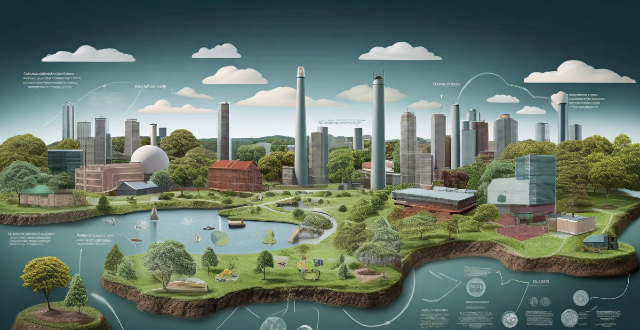
How does environmental degradation affect global ecosystems ?
Environmental degradation affects global ecosystems in various ways, including loss of biodiversity, disruption of ecosystem services, changes in the carbon cycle, and impact on human health. It is crucial to take steps to mitigate environmental degradation and protect our planet's ecosystems for future generations.

Is green technology a sustainable solution for environmental problems ?
Green technology offers a promising pathway towards sustainability, but it's not without its challenges. While it has the potential to significantly mitigate environmental problems, it requires substantial investment, infrastructure development, and policy support to reach its full potential.

Have any celebrities started their own environmental organizations or foundations ?
This text discusses the environmental organizations and foundations founded by celebrities such as Leonardo DiCaprio, Emma Watson, Prince Harry and Meghan Markle, and Jane Goodall. The organizations focus on various environmental causes, including protecting wildlife, combating climate change, promoting sustainability, and addressing social justice issues related to the environment.